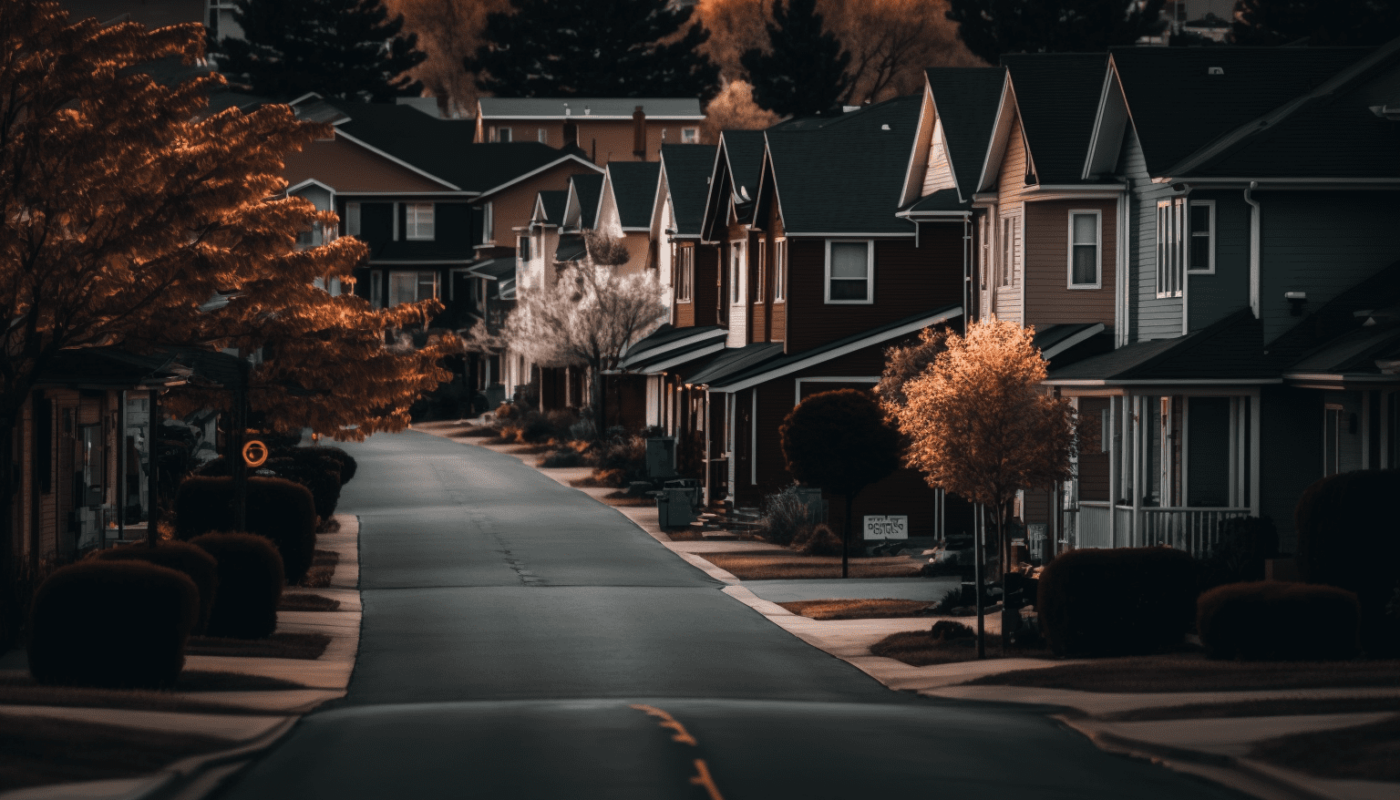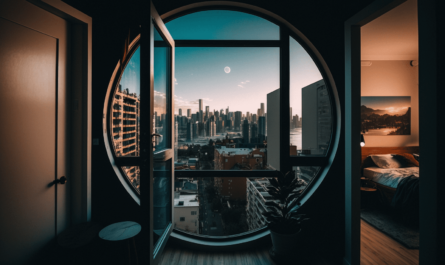Nestled within the labyrinth of thriving urban landscapes, one often finds glistening boutiques whose window displays exude an aura of opulence: jewelry stores. But these glittering emporiums do more than merely showcase diamonds and gold—they weave a rich tapestry that elevates the very soil they stand upon. This article delves into the symbiotic relationship between jewelry stores and property values, shining a light on how luxury retail shapes real estate fortunes.
The Jewelry Store Influence
Venturing into the bustling avenues of upscale districts, one can’t help but be magnetically drawn to the gleaming facades of jewelry stores. Regarded as the zenith of retail experiences, these establishments are far more than just venues for commerce; they are symbols of opulence and indicators of a location’s prestige. Conjuring images of iconic locales like Rodeo Drive or the enchanting Place Vendôme, it’s evident that jewelry boutiques act as powerful magnets, pulling in those seeking luxury. These stores don’t merely sell products; they peddle a promise of exclusivity.
By catering to an elite clientele that boasts of both affluence and discernment, these boutiques naturally stir a sense of excitement and allure, transforming their surroundings into pulsating hubs of activity. Simultaneously, the palpable aura of luxury radiating from these establishments bathes the surrounding region in an elevated sense of worthiness, making a statement about the locale’s elevated stature in the world of opulence.
Impact on Surrounding Property Values
To witness the transformative power of jewelry stores, one need only observe their effect on the real estate landscapes they inhabit. Their glimmering presence often heralds a resounding ascent in the property values of their surroundings. The relationship isn’t coincidental but causal. A jewelry store’s establishment often acts as a beacon for other luxury retailers, luring them to join in and create a tapestry of high-end commerce. As these elite establishments cluster, the area’s appeal magnifies, elevating it to a sought-after destination.
But the appreciation in property values is not solely due to this commercial allure. The very essence of a luxury jewelry store necessitates robust security measures, which in turn boost the safety quotient of the vicinity. Additionally, the revenue generated from these prosperous businesses often gets funneled back into the community, leading to enhanced infrastructure and public amenities. The combined result? A locality that not only boasts a sterling reputation for luxury but also stands as a testament to the symbiotic relationship between commerce and community welfare.
Case Studies
- New York’s Fifth Avenue:
- Overview: Known as one of the world’s premier shopping districts, this iconic avenue boasts an array of flagship stores of luxury brands, with jewelry boutiques prominently leading the way.
- Historical Trend: Over the decades, as renowned jewelers like Tiffany & Co. and Harry Winston opened their doors, Fifth Avenue transformed from an elite residential street into a luxury retail mecca.
- Property Impact: Coinciding with the growth of these high-end retailers, the real estate values in and around Fifth Avenue skyrocketed, making it not only a shopping destination but also one of the most valuable stretches of real estate globally.
- London’s Bond Street:
- Overview: Bond Street, split between Old and New, is synonymous with luxury and sophistication in London, with a lineage of jewelry establishments dating back centuries.
- Historical Trend: As time progressed, many global jewelry brands established their presence here, further elevating Bond Street’s status.
- Property Impact: The arrival and continuous growth of luxury jewelry stores have consistently driven up property values. Today, both commercial and residential properties in its vicinity command some of the highest prices in the UK capital.
- Monaco’s Golden Circle:
- Overview: Nestled in the heart of Monte Carlo, this area is not only a playground for the wealthy but also a nucleus for luxury jewelry retail.
- Historical Trend: Over the years, as Monaco established itself as a tax haven and hotspot for the affluent, the Golden Circle followed suit, attracting luxury jewelry brands and boutiques.
- Property Impact: A close observation reveals that as these jewelry establishments thrived, there was a direct correlation with rising real estate values. Monaco, although small in size, stands as a testament to the powerful influence of luxury retail on property prices.
Community and Local Economy
High-end jewelry stores, often seen as the epitome of opulence, have ramifications that extend well beyond their sparkling showcases. Their very existence often proves beneficial to the community and the local economy at large. As these stores flourish, they pave the way for a wave of economic prosperity. From hiring local talent to sourcing regional materials, they become substantial employers, driving down unemployment rates. Additionally, they invite a higher footfall of affluent clientele, leading to a surge in local business for nearby cafes, restaurants, and other retailers. Their commitment to the locale often manifests in myriad ways, such as actively participating in community development endeavors.
Whether it’s through sponsorship of local cultural events, contributing to public art projects, or even philanthropic activities, these establishments entrench themselves in the fabric of the community. This synergy results in an elevated communal experience, where economic growth marries cultural enrichment, leading to a more cohesive and spirited community. For more insights into the positive impact of high-end jewelry stores on local economies and communities, you can explore resources provided by industry associations and economic development organizations such as the National Retail Federation.
The Balance of Luxury and Neighborhood
The melding of luxury retail with residential spaces is an art. While the glamour of jewelry stores undeniably elevates the prestige of an area, it’s imperative to maintain the heartbeat of the neighborhood. The essence of what makes a community unique should not be overshadowed. Whether it’s the quaint charm of local eateries, the laughter of children playing in nearby parks, or the camaraderie of community gatherings, these elements should flourish alongside the glitter of luxury. It’s this harmonious blend, this equilibrium between the splendor of retail and the soul of the residential, that molds a truly enriched neighborhood. One where value isn’t just gauged by property prices but by the quality of life and the cherished memories created therein.
Conclusion
Embarking on this exploration of the symbiotic relationship between luxury jewelry retailers and real estate dynamics, we find ourselves at an illuminating crossroad. Jewelry stores, far from being mere commercial establishments, emerge as catalysts for growth, prosperity, and community enrichment. Their radiance extends beyond their gleaming windows, casting a luminescent glow on property values, community spirit, and the broader economic milieu. It’s evident that these establishments are more than just vaults of luxury; they are pillars that support and elevate entire communities. Their legacy, much like the timeless pieces they curate, is enduring and invaluable, etching their mark on the annals of luxury real estate. We also advise you to read our article, where we talked about the etiquette of a jewelry store.
FAQ
Luxury jewelry stores often lead to an increase in property values due to their ability to attract other high-end retailers and enhance the area’s overall appeal.
Luxury jewelry stores contribute to the local economy by creating jobs, attracting affluent customers to nearby businesses, and participating in community development initiatives through sponsorships and philanthropy.
The article suggests that a harmonious blend of luxury retail and residential elements is essential, preserving the unique character and quality of life in the neighborhood while enhancing its prestige.



